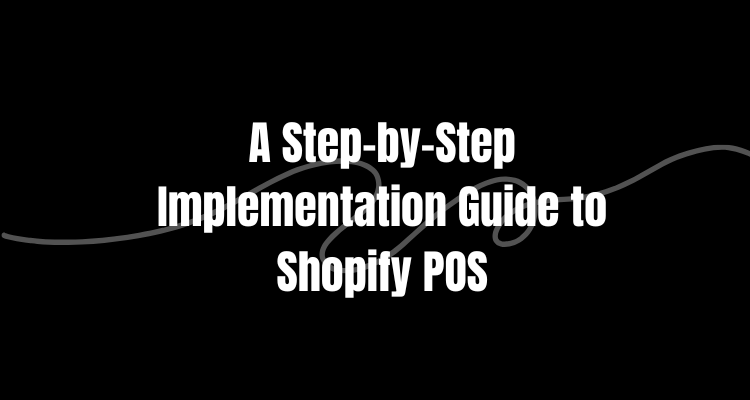What is Shopify POS?
Shopify POS is a cloud-based point-of-sale system that integrates directly with your Shopify eCommerce platform. This powerful tool allows retailers to manage in-store sales, inventory, customer data, and reporting all in one place. By uniting online and physical storefronts, businesses can provide a consistent shopping experience to customers—whether they are browsing on your website or visiting your brick-and-mortar store.
Key Benefits of Shopify POS
- Seamless Integration: Easily connect your online store with your physical location.
- User-Friendly Interface: Simplifies the sales process for your staff.
- Real-Time Inventory Management: Keep track of products across all sales channels.
- Flexible Payment Options: Accept various payment methods to suit your customers' needs.
- Actionable Insights: Access detailed reports to understand sales trends and customer behaviors.
By leveraging Shopify POS, retailers can streamline operations and create a unified shopping experience that boosts customer satisfaction and sales conversion rates.
Preparing for Your Shopify POS Implementation
Before diving into the technical setup, it's essential to prepare your business for a smooth transition. Follow these pre-implementation steps to ensure your team and infrastructure are ready.
1. Evaluate Your Business Needs
Assess your current retail operations to determine how Shopify POS can address your specific challenges. Consider factors such as:
- The volume of in-store transactions.
- Your current inventory management processes.
- Staff training requirements.
- Integration with existing hardware systems (e.g., barcode scanners, receipt printers).
2. Set Up a Shopify Account
If you haven't already, create a Shopify account. This is the backbone of your POS system, as it will manage both your online and offline sales data. Choose a plan that suits your business size and expected sales volume.
3. Check Hardware Compatibility
Shopify POS works best when paired with compatible hardware. Ensure that your current devices or any new purchases meet Shopify's recommended requirements. Common hardware includes:
- iPads or Android Tablets: For running the POS app.
- Barcode Scanners: For quick inventory checkouts.
- Receipt Printers: To generate physical receipts for customers.
- Cash Drawers: For secure cash management.
4. Train Your Team
Invest time in training your staff on using Shopify POS. A well-trained team can reduce errors during transactions and improve customer service. Utilize Shopify's training resources and consider scheduling in-person sessions or webinars.
Step-by-Step Guide to Setting Up Shopify POS
Once you have prepared your business, follow these steps to set up your Shopify POS system.
Step 1: Install the Shopify POS App
- Download the App: Visit the App Store or Google Play Store and download the Shopify POS app.
- Log In: Use your Shopify credentials to log into the app.
- Sync Your Data: The app will automatically sync your products, inventory, and customer details from your Shopify store. This ensures that all data is up-to-date across your online and offline channels.
Step 2: Configure Payment Settings
Setting up your payment methods is crucial for processing transactions smoothly.
- Select Payment Providers: Choose from a variety of payment gateways supported by Shopify POS (e.g., Shopify Payments, PayPal, third-party gateways).
- Set Up Cash Handling: Configure your cash drawer settings and ensure that the amounts match your daily sales.
- Test Transactions: Run a few test transactions to confirm that payments are processed accurately.
Step 3: Customize Your POS Settings
Tailor the Shopify POS system to match your business operations.
- Organize Your Inventory: Group products by categories to speed up the checkout process.
- Set Discounts and Promotions: Configure any ongoing discounts or promotions directly in the app.
- Adjust Receipts and Invoices: Customize the appearance of your receipts to include your brand logo, contact information, and return policies.
Step 4: Connect Hardware Devices
Integrate your POS hardware with the Shopify app.
- Pair Devices: Follow the manufacturer's instructions to connect barcode scanners, receipt printers, and cash drawers.
- Test Integration: Perform test scans and print sample receipts to ensure everything works as intended.
- Troubleshoot Issues: Refer to Shopify's support documentation if you encounter connectivity problems.
Step 5: Launch and Monitor Your POS
Once everything is set up, it's time to go live.
- Soft Launch: Consider starting with a soft launch during non-peak hours to work out any unforeseen issues.
- Monitor Performance: Keep an eye on sales data and customer feedback. Shopify's dashboard offers real-time insights into transaction volumes, inventory levels, and staff performance.
- Make Adjustments: Use the initial data to optimize your setup. For example, adjust product groupings or refine discount strategies based on customer purchasing patterns.
Tips for Optimizing Your Shopify POS Experience
To get the most out of your Shopify POS system, keep these tips in mind:
Optimize Your Inventory Management
Regularly update your product listings and monitor stock levels across both online and offline channels. Automated inventory updates help prevent overselling and ensure that customers always see accurate stock information.
Enhance Customer Experience
- Personalized Service: Use customer data from Shopify POS to offer personalized recommendations and loyalty rewards.
- Quick Checkouts: Simplify the checkout process by minimizing the number of steps required to complete a transaction.
- Mobile Accessibility: Equip your sales team with mobile devices to assist customers anywhere in the store.
Leverage Reporting and Analytics
Shopify POS provides a wealth of data that can help you fine-tune your retail strategy:
- Sales Reports: Analyze daily, weekly, and monthly sales trends to identify peak shopping periods.
- Customer Insights: Understand buying patterns and tailor your marketing campaigns accordingly.
- Performance Metrics: Track staff performance to ensure optimal customer service and operational efficiency.
Regularly Update Your System
Keep your Shopify POS app and related hardware updated to benefit from the latest features and security patches. Regular updates ensure that your system remains reliable and secure against potential threats.
Troubleshooting Common Issues
Even the best systems can encounter issues. Here are some common problems and solutions:
- Connectivity Problems: If your devices are not syncing properly, ensure that you have a stable internet connection and that your Wi-Fi network is configured correctly.
- Payment Processing Errors: Double-check that your payment gateway settings are correct and that your account is in good standing.
- Hardware Malfunctions: Regularly service your hardware and keep spare components on hand in case of failure.
Conclusion
Implementing Shopify POS can transform the way you manage your retail operations by seamlessly integrating your online and offline sales channels. From setting up your account and configuring payment settings to integrating hardware devices and training your staff, every step plays a vital role in ensuring a successful launch.
By following this comprehensive step-by-step guide, you can optimize your Shopify POS setup, streamline your checkout process, and provide a superior customer experience—leading to increased efficiency and higher sales conversion rates. Start your journey with Shopify POS today and unlock the full potential of your retail business.
Would you like a customized SEO strategy tailored for your business? Book a free consultation & Get in touch with Webcraftio today!

